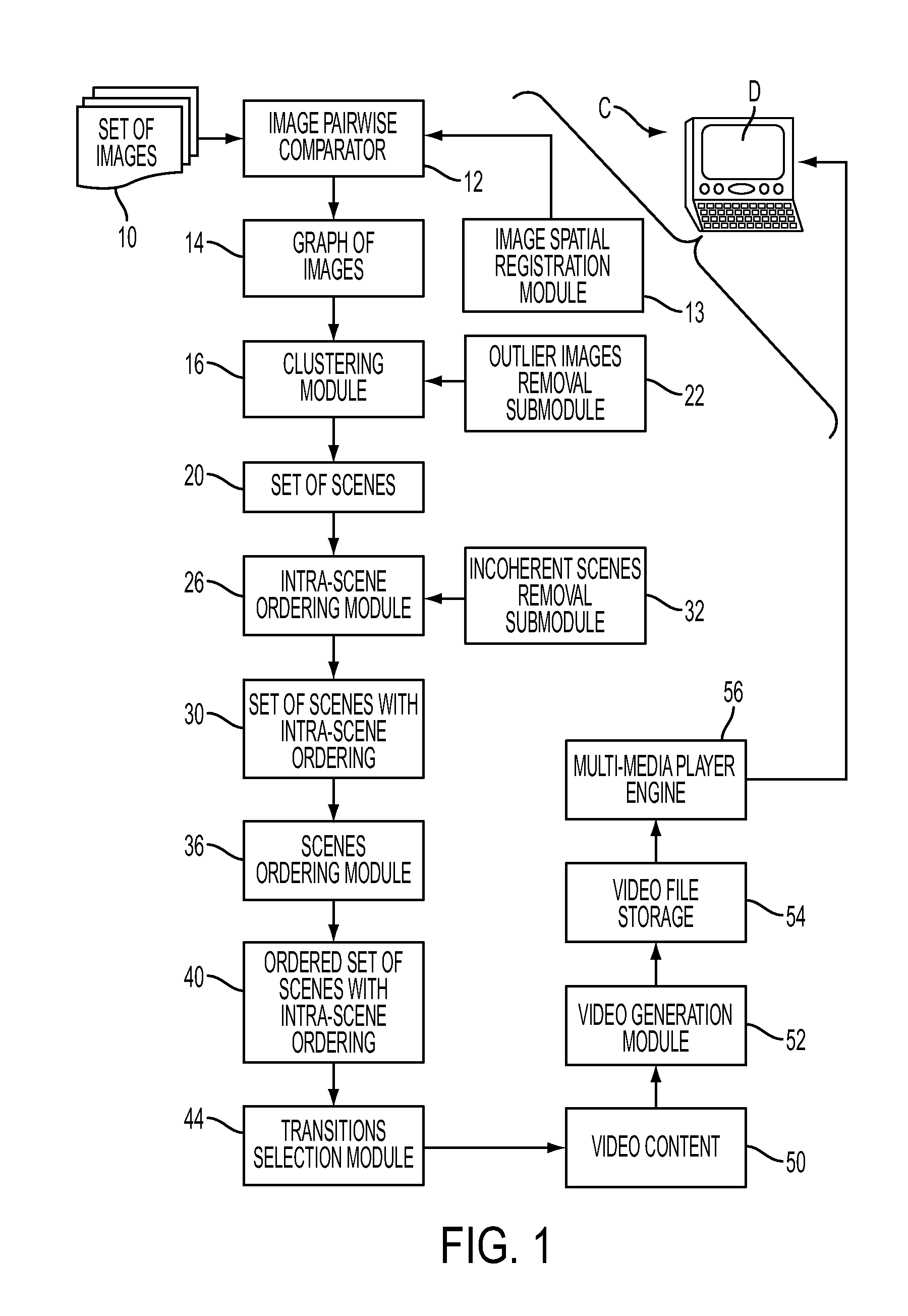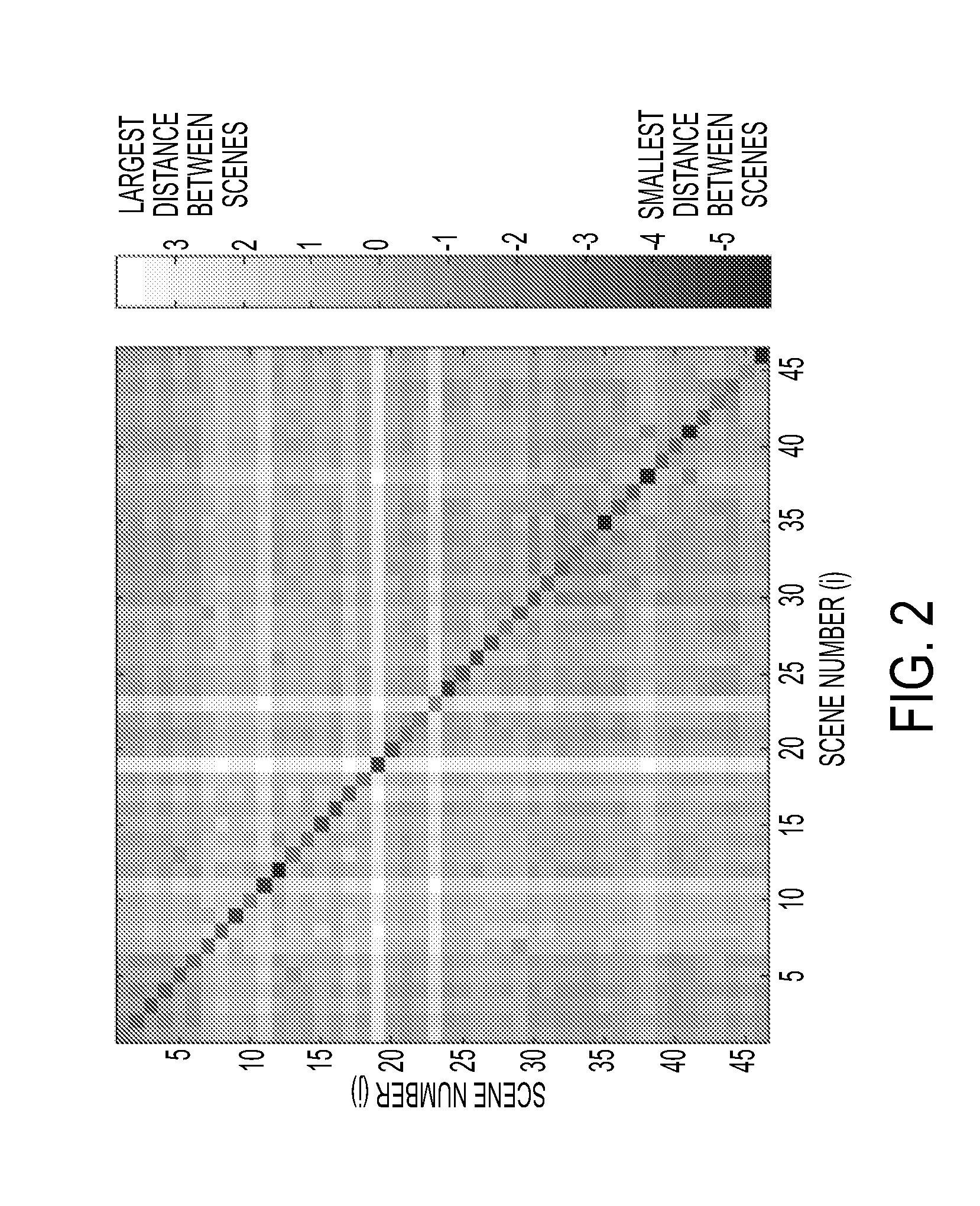Generation of video content from image sets
a technology of image sets and video content, applied in the field of information retrieval arts, image arts, image arts, communication arts, can solve the problems of inability to efficiently review or select images from a large number of users, lag in the development of technologies,
- Summary
- Abstract
- Description
- Claims
- Application Information
AI Technical Summary
Problems solved by technology
Method used
Image
Examples
Embodiment Construction
ned frame rate.
BRIEF DESCRIPTION OF THE DRAWINGS
[0014]FIG. 1 diagrammatically shows an illustrative system for generating video from image sets.
[0015]FIGS. 2 and 3 diagrammatically show selected quantitative metrics for video content generated using an actually constructed implementation of the system of FIG. 1.
DETAILED DESCRIPTION
[0016]In the following, methods and apparatuses are disclosed which provide for viewing and optionally selecting, an image using an interface in which a set of images are presented as video content. As used herein, the term “video content” refers to a set of images ordered with respect to the basics of effective video discourse. These basics include division of content into one or more “scenes”, where each scene is a sub-set of visually coherent images. Sets of images that are similar to each other are an example of visual coherence so scenes can be found by grouping similar images. The similarity can be given by any selected similarity measure, and the si...
PUM
 Login to View More
Login to View More Abstract
Description
Claims
Application Information
 Login to View More
Login to View More - R&D
- Intellectual Property
- Life Sciences
- Materials
- Tech Scout
- Unparalleled Data Quality
- Higher Quality Content
- 60% Fewer Hallucinations
Browse by: Latest US Patents, China's latest patents, Technical Efficacy Thesaurus, Application Domain, Technology Topic, Popular Technical Reports.
© 2025 PatSnap. All rights reserved.Legal|Privacy policy|Modern Slavery Act Transparency Statement|Sitemap|About US| Contact US: help@patsnap.com



